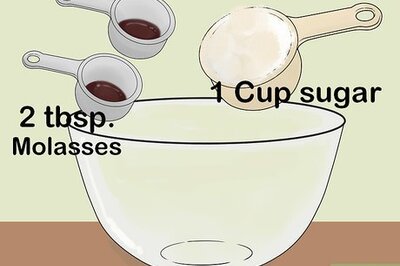
views
CUTTACK: Odisha has become the first State in the country to release an essential medicine list for children (EMLC) to ensure availability and supply of medicines in right formulations and dosages for the child population. In line with the WHO programme ‘Make medicines child-size’, the State Health Department has issued the formulary listing around 165 drugs and medicines in different dosages for children right from the time of birth to 12 years of age. However, even as the Government has started decentralised procurement of drugs under the EMLC through Chief District Medical Officers (CDMOs) under the Janani Surakhya Yojana programme and the Jana Ausadhi stores, concerns are being raised over universal availability of the child-specific medicines across the facilities, both Government and private. Experts have emphasised on announcement of a regulatory policy to make stocking of essential life saving medicines for children at the private drug stores, deriving formulations from the EMLC, mandatory. The policy should also deal with pricing of the drugs in the private sector, so as to make them affordable and within the reach of the maximum number of the people. According to a study conducted under the WHO project on Better Medicines for Children in Odisha last year, not only was there an acute shortage of child-specific medicines both at the Government hospitals and the private pharmacies but also highly priced. Drug availability was directly linked to the prescription behaviour of the doctors, which relied entirely on brands and resultant cost escalations, the study pointed out. The study conducted by Associate Professor of Pharmacology of the SCB Medical College and Hospital here, Dr Trupti Rekha Swain, also revealed that of about 34 child-specific formulations have been taken into account, Government hospitals had only six while the retail market had around 13. Drugs in child-specific dosages for diarrhoea, respiratory diseases as pneumonia and malaria, which are the three largest contributors to child mortality were not available. “For example, Zinc dispersible tablets or solutions, which are very effective anti-diarrhoeals, were simply not available in the market or with the Government. Anti-malarial drugs as Artemether plus Lumefantrine tablets in proper dosages and child-suitable formulations solutions or dispersible tablets were also not available,” Dr Swain reported. With the third phase of the WHO project ready to go underway following the publication of the EMLC and start of procurement, the focus should now be on the private sector drug market. “More than 80 per cent of the patients depend on the private sector for their medicine requirement. By simply procuring for Government supply and not taking any steps to ensure availability of formulations in the retail drugs store will fail the very objectives of the initiative of decreasing infant mortality rate,” Dr Swain said. According to WHO estimates, nearly five million children die every year from conditions that could be treated with safe, effective and child-specific medicines. The prevailing practice is to break adult dosage forms of tablets or lower amount of syrups on presumption for use in children This not only results in under or over-dosage, often leading to adverse reactions or treatment failure.



















Comments
0 comment